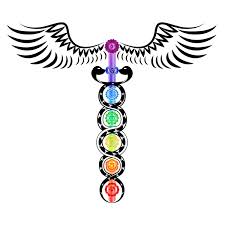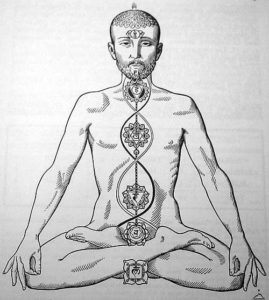I am often asked what kind of yoga I teach, and after almost 35 years, I am still stymied as to how to answer. I usually mercifully restrain myself from breaking into a lecture and say that I teach hatha yoga. The problem with this is that the meaning of the word has been abducted into the world of yoga branding to mean a certain style of asana. The styles that many seem to think of as different kinds of yoga are generally different brands or styles of hatha. If you are doing asanas in yoga pants in a studio on a yoga mat, you are doing hatha yoga.
A similar thing has happened to the words Kundalini Yoga. Many yogis confidently inform me that Kundalini yoga is a unique brand of yoga in which teachers, belonging to a lineage advocating the wearing of white turbans, instruct exercises specifically to arouse Kundalini. While that is true, it is also true that all hatha yoga is Kundalini yoga.
Hatha yoga is a vehicle that assists and supports the arousal and movement of the subtle energy known as Kundalini Shakti. “Ha-Tha” refers to the two DNA shaped subtle channels, the ida and pingala, which entwine the the central spinal channel, called the sushumna, where the chakras are aligned and where the primary action of the Kundalini takes place. The purpose of the asanas is the balance or equilibration of those alternating opposite currents, the ida and the pingala . This is meant to charge the sushumna, igniting the Kundalini, the way we power our electronics by plugging them into alternating current.The traditional graphic of this subtle anatomy is familiar to us in the form of the medical health symbol, the caduceus, suggesting, not surprisingly, that the Greeks were aware of the power of the Kundalini. It is not hard to find recognition of this energy system in diverse cultures and in spiritual traditions throughout the globe. Under different names and down through the centuries, the nectarean, awakening energy that flows through the spinal centers has been treasured and cultivated.
Tantra is the term given to the tradition of enlightenment technology, including hatha yoga, that concerns the Kundalini Shakti and the states of consciousness that She reveals. Tantra is a treasury of effective physical and cognitive tools that lead the practitioner to a taste of the supreme reality, aka the One, Samadhi, The Kingdom of Heaven, Enlightenment, Nirvana, or Non-dual Awareness. A critical component of Tantra is that of refined understanding. With the right understanding, students can use the tools of asana and pranayama to recognize their own innate, ever-present Self realization, their natural samadhi, their own “Buddha mind”. The poses move the prana around the body, facilitate the progress of the Kundalini, and symmetrically stimulate the nervous system/brain to prepare it for meditative competency and for the blissful, visceral experience of non duality.
Earlier on, I used the term “She” to refer to the subtle Kundalini Shakti, which the tantric texts declare is coiled sleeping at the base of the spine. I respectfully personify the energy because this supremely intelligent and independent force is not something to attempt to toy with, to trivialize or to commodify, especially if we wish to know it from within. The utmost humility and reverence is invoked in tantric practices, as reverence and awe is a means of Her awakening and ascent. In our most joyful ceremonial rite, the wedding, the ascent of the bride from the base of the center aisle to the altar where the bridegroom awaits is a metaphor for the energetic journey of the Kundalini Shakti along the sushumna, from the root chakra to ecstatic communion at the crown center. The thing about the omniscient Shakti is that She is impossible to fool. The sleeping beauty is awakened by a kiss of authentic love.
All branches of yoga practice and philosophy arrive from the same source and result in the same goal of union of the individual with universal consciousness. Next time you are asked what type of yoga you teach or practice, feel free to answer Hatha yoga, Tantric yoga or Kundalini yoga, in the recognition that they are, and always have been, one and the same.












Leave a Reply